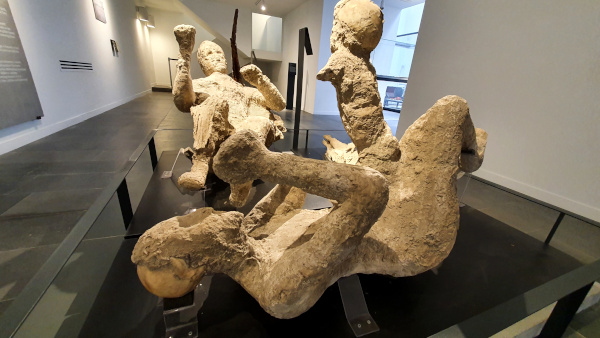The DNA of the inhabitants of Pompeii Moving towards a complete genetic mapping of the population
The recent news disseminated by the press, regarding the sequencing of the DNA of an inhabitant of Pompeii, forms part of a broader line of studies conducted by the Archaeological Park of Pompeii, which has for years been working - alongside universities and scientific institutions - towards mapping all available DNA, reserving the right to publish the results when the final picture is complete and scientifically comprehensive.
The DNA of the inhabitants of Pompeii has been extracted since 1998, making it one of the most well-established fields of scientific research at the site. We cannot, therefore, speak of a ‘first DNA map’ which has emerged now, but rather of one piece of a long-term research project which will form part of a far broader and more comprehensive picture.
The particular strength of the recent study lies in the genetic identification of a notable pathology - namely, tuberculosis - which had already been detected by autopsy, although the individual in question yielded a genome that was only 33% complete. The subject of the study, having been excavated in 1934 and exposed for a considerable length of time, has yielded percentages of endogenous DNA that are substandard in relation to those detected by the structured and reasoned mapping still in progress.
This monumental genetic mapping programme, which began in 2015 and has targeted the entire population of Pompeii, is being conducted by the Park in collaboration with the University of Florence, with the aim of having a true picture of an imperial-age population.
This project stemmed from an awareness that the volcanic deposits functioned as a ‘shell’ around the remains of the Pompeians, effectively preventing them from being ‘contaminated’ by external factors. The ambitious project led to the winning of a RPNI (Research Project of National Interest), entitled ‘POMPEII molecular portrait’, with €800,000 of funding.
Previous study of the DNA of those who perished in the eruption of AD 79 has already produced significant, and sometimes surprising results. For example, analyses of the casts of a presumed family, which had sought refuge in the House of the Golden Bracelet, revealed that the group was composed of two adults and two male children, but without any genetic relationship.
“Each new piece of data revealed by these studies is an important achievement for scientific research, which contributes to the completion of the historical overview of an era and of a civilisation. This is the result of interdisciplinary collaboration, of prolonged and patient teamwork, which also requires a common will to disseminate accurate information, while avoiding simplistic protagonism which can cause that information to be misleading” - declares Director Gabriel Zuchtriegel - “The Archaeological Park of Pompeii is a privileged laboratory of experimentation for such studies, and is the custodian of the subsequent results, which when collated and cross-checked are able to ensure the correct communication of archaeological, anthropological, and scientific research in general”.


